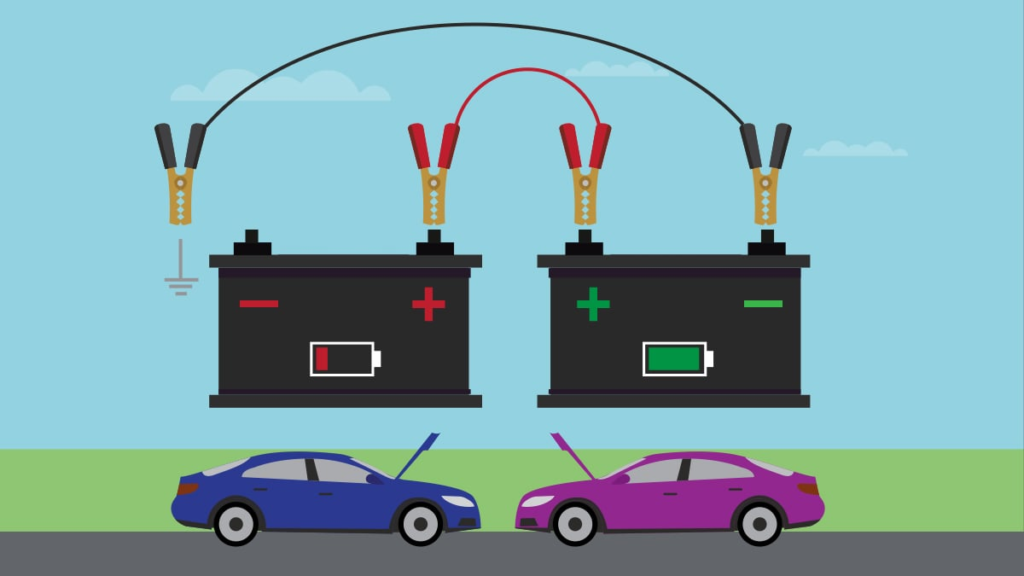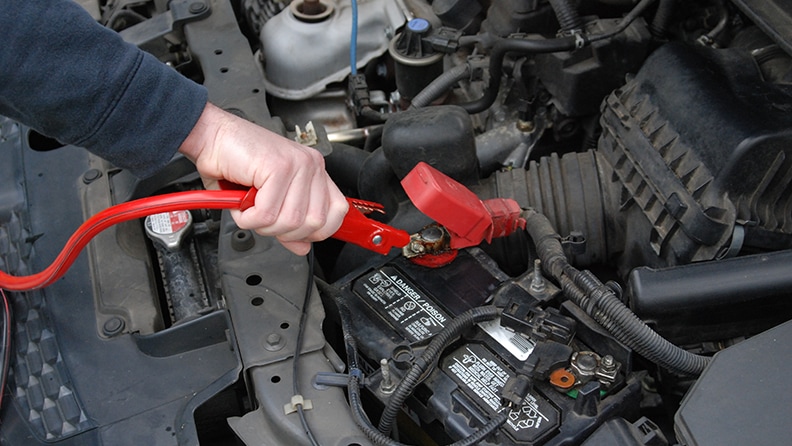Table of Contents
If you’ve ever wondered how to jump a car, don’t worry — it’s easier than it sounds! Jump-starting a car is a great way to get your vehicle running again when your car battery is dead. In this guide, we will walk you through each step you need to know to safely jump a car, so you can avoid the hassle and get back on the road in no time.
Knowing how to jump a car is an essential skill for every driver. Whether you’re stuck at home, at work, or on the side of the road, understanding the basics of jump-starting a car can save you time and money. All you need are jumper cables, a working car battery, and some simple steps to follow. Let’s get started!
How to Jump a Car: Step-by-Step Instructions for Beginners
When your car battery dies, you can use jumper cables to jump-start it. This process allows your car to get power from another car’s battery to start up again. First, park the two cars close enough so that the jumper cables can reach both batteries. Be sure that both cars are turned off.
Next, open the hoods of both cars and find the battery terminals. The positive terminal is usually marked with a “+” sign, and the negative terminal has a “-” sign. Once you’ve found the terminals, you can begin connecting the jumper cables. This part is important because the clamps should never touch each other during the process.
Once the cables are connected, start the car with the good battery. Let it run for a few minutes. Then, try to start the car with the dead battery. If it doesn’t start immediately, wait for a few more minutes, then try again. Once the car starts, you can safely disconnect the jumper cables, and your car is ready to go.
The Right Tools You Need for Jumping a Car
To safely jump a car, having the right tools is crucial. The most important tool is a set of jumper cables. Jumper cables come with two colors: red for positive connections and black for negative connections. These cables help transfer power from the good battery to the dead battery.
Another helpful tool is a flashlight. If you’re jumping a car at night or in a dark area, a flashlight will help you see better when connecting the jumper cables. It’s also important to have a screwdriver or tool that can remove battery terminal covers if they’re in the way.
Lastly, make sure you have a vehicle with a charged battery nearby. Without a working car to give the jump, the process won’t work. Keep these tools in your car just in case you need to jump-start your battery.
How to Jump a Car Safely Without Risk of Damage

Knowing how to jump a car safely can prevent damage to both vehicles. One of the key things to remember is not to let the jumper cable clamps touch each other. If they do, it can cause a spark, which is dangerous.
When connecting the cables, always start with the red (positive) cable. Attach it to the positive terminal of the dead battery first, and then connect it to the working battery’s positive terminal. For the black (negative) cable, attach it last. Instead of connecting it to the dead battery’s negative terminal, connect it to an unpainted metal surface on the car, like a bolt. This will help avoid sparks near the battery.
After everything is connected, make sure the cables aren’t in the way of any moving parts. Start the working car and let it run for a few minutes. Once the dead car starts, remove the cables in reverse order: first the black cable, then the red.
What to Do If Your Car Won’t Start After Jumping It
Sometimes, despite following the steps on how to jump a car, your car might not start. This could be because your battery is too far gone to hold a charge. If the engine doesn’t turn over after several attempts, it may be time to replace the battery.
If your car still doesn’t start after you’ve tried jump-starting it, you might need to check the alternator or other parts of your vehicle’s electrical system. An alternator that isn’t working can prevent the car from charging the battery properly.
At this point, it’s best to call for roadside assistance or have your car towed to a mechanic. They will be able to check the car’s system and determine if it’s the battery, alternator, or something else that’s causing the problem.
How to Jump a Car Correctly to Protect Both Vehicles

When you’re jump-starting a car, it’s important to connect and disconnect the jumper cables in the right order to avoid damage. Always attach the positive cable first and the negative cable last. This reduces the chance of creating a spark that could harm the battery or cause a fire.
Sub-heading (h3):
- Start with the positive terminal on the dead battery.
- Then connect the positive terminal on the good battery.
- Finally, connect the negative terminal to an unpainted metal part of the dead car.
After you’ve connected the cables, make sure that no clamps are touching any metal parts or each other. Also, do not turn on the car with the dead battery until the jumper cables are securely attached.
How to Jump a Car: What You Should Know About Car Batteries
Car batteries can die for many reasons, such as leaving your lights on or simply the age of the battery. It’s essential to know how to jump a car if you ever find yourself with a dead battery. However, it’s also important to recognize when your battery might need to be replaced.
Sub-heading (h3):
- A battery that is older than 3-5 years may need to be replaced.
- If your battery has visible damage or leaks, replace it immediately.
Once your car is jump-started, drive it for at least 30 minutes to allow the battery to charge. If the car doesn’t start again after being turned off, you might need a new battery.
How to Jump a Car in Emergency Situations: A Simple Guide

In an emergency, you might need to jump-start your car quickly to avoid being stranded. Knowing how to jump a car in an emergency can save you time and get you back on the road quickly. It’s helpful to always have a set of jumper cables in your car for such situations.
Sub-heading (h3):
- Make sure the area is safe to work in before attempting to jump-start.
- If you’re on the side of the road, stay clear of traffic.
Always keep calm and follow the steps to connect the cables properly. Once your car is started, make sure to drive to a safe place to check if it will start again later.
Conclusion
Jumping a car is a simple task when you know the right steps and have the proper tools. Always remember to connect the cables in the right order: red to positive and black to negative. Make sure the clamps never touch each other, and follow the steps carefully to avoid any sparks or accidents. Once you know how to jump a car, it’s a skill you’ll always have on hand if your car battery dies.
If your car doesn’t start after using jumper cables, it could mean something else is wrong with your car, like the battery being too old or the alternator not working. In that case, it’s best to get help from a professional. With the right knowledge and tools, you can easily jump-start your car and get back on the road safely.
FAQs
Q: Can I jump a car by myself?
A: Yes, you can jump a car by yourself, but it’s safer with two people. One person can drive the working car, while the other connects the cables.
Q: How long do I need to let the good car run before starting the dead car?
A: Let the working car run for about 3-5 minutes before trying to start the car with the dead battery.
Q: What happens if I connect the jumper cables incorrectly?
A: Connecting the cables incorrectly can cause sparks or damage the batteries, which can be dangerous.




